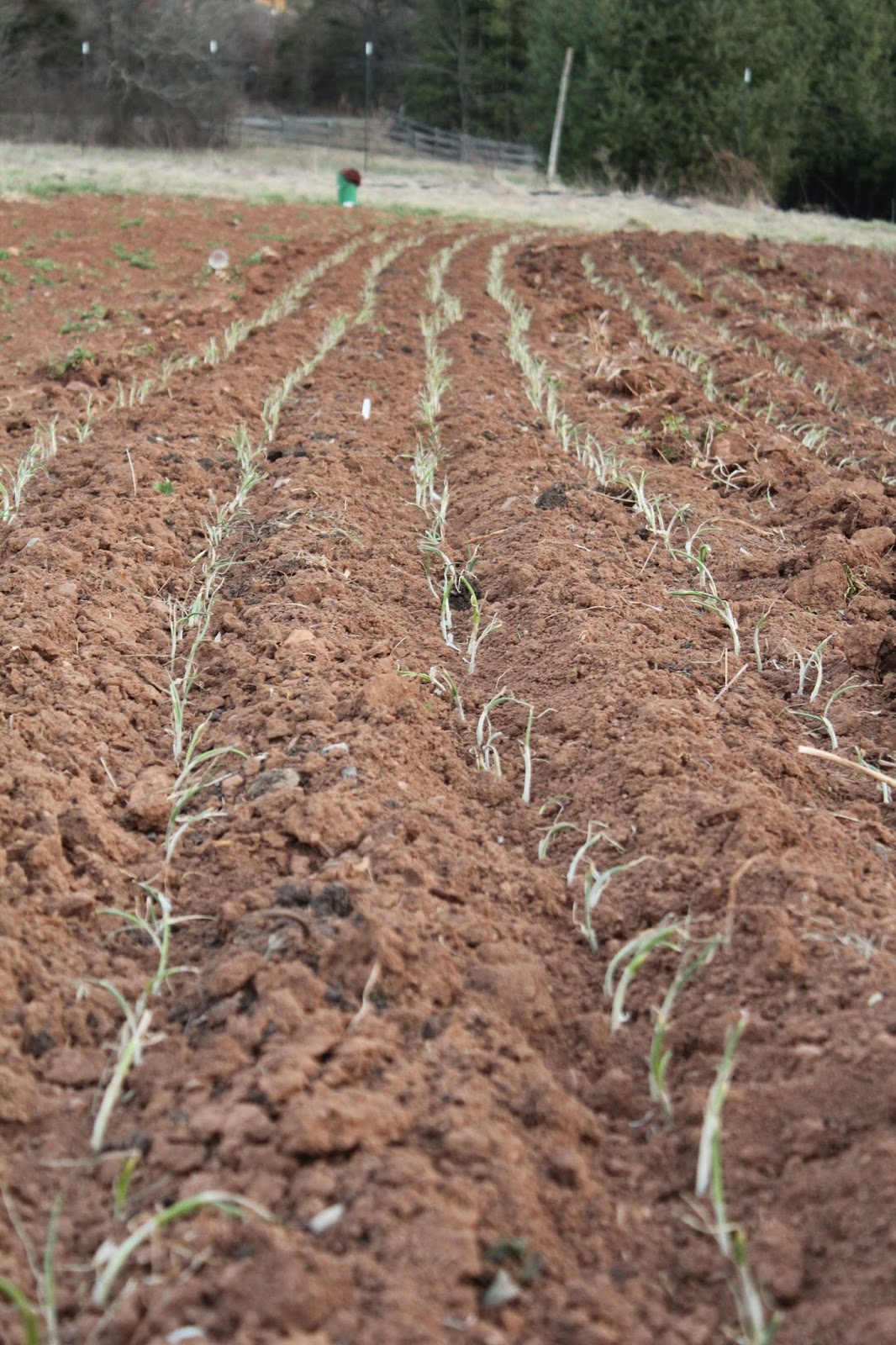Hairy vetch nodules
young vetch plant
Last September (2013) a .24 acre field was sown to the following: oats, barley, red clover, and vetch. The oats and barley, winter killed predictably. The vetch and clover are coming back nicely, along with some miscellaneous grass from areas that were not cultivated well, because this area last season was planted in tomatoes, and completely mulched with old hay.
So last fall it was not totally clear what would be planted in this spot, but I knew it would be somewhat later in the following spring. But I've just realized we need more area for both transplanted and direct sown crops in the next 4 weeks. The greatest benefit of the cover crops would have been to let the vetch and clover get bigger, and take advantage of the symbiotic relationship between the air and nitrogen that the vetch/clover offer.
Notice below the little white nodules on the vetch roots. The presence of these represents that certain rhizobia are present, but not necessarily the nitrogen fixing kind. So one was dissected, and it was red/pink on the inside, from my research this indicates that the rhizobia are indeed of the nitrogen fixing kind. Interestingly, the vetch seed was not inoculated last fall, which many sources of seed recommend doing. This means the appropriate rhizobia were already present in our soil.
vetch nodules
Experimental tillage techniques (to me at least)
So we are missing out on getting most nitrogen fixation, and biomass, but the state of the immature cover crops gave me an opportunity to try using just chisel plow and disc to prepare this ground.
Here is one chisel shank mounted on my toolbar set up, this tractor can really only pull two of these well (15hp/ shank at least needed). The chisel plow does not turn over the ground like a mold board plow, it sort of pushes up the area on either side of the shank, and obviously fractures the soil down to depth of about a foot (in my case the tractor has a hard time pulling tow shanks buried all the way). So two passes were made with the chisel plow shanks located on the inside and outside positions, then one last pass with one shank and the tool bar offset so I could go down the middle of the bed. Here is what the area looked like after these 3 passes.
Now after one pass with the disc.
Much of the exposed vetch and clover is wilted down, and will probably die. Compost and amendments will be spread, and and disced one more time, this should be ready to transplant into, but a pass with a tiller is definitely needed for any fine seeded crops. I wish the disc could chop the debris into finer pieces. I'm hoping all this is helping feed the microbes and make our soil better!
Rabbit misconceptions
This last month a young man who helps us out around the farm expressed an interest in keeping rabbits for meat, and I've occasionally pondered the thought, but not given any serious study to the matter. Well he built a nice "rabbit tractor" to keep them on fresh grass and weeds, and then we proceeded to hunt some rabbits down on craigslist. Found a great connection with a guy who has been raising them for over 40 years. After our conversations we realize we have a lot to learn about rabbits.
white new zealand buck
brown new zealand doe
I had assumed that all the rabbits we would get would just be put in the moveable pen and everybody would be so happy. WRONG. We ended up getting two does from two different craigslist connections. Upon immediate meeting they get into what appears to be a violent altercation. I call my my main rabbit guy, "Oh yeah they will kill each other." Ok. Now on to what I thought was something so basic a concept, that it gave rise the the popular idiom, "to breed like rabbits."
So first, I'm told you should bring the doe to the bucks cage, something about him getting in her space, and they fight, and she kills him. Them I'm told that if you leave the doe in there too long after the buck has done his thing, and he tries to do it again she gets a little testy, and will castrate him!! Wow, so far the idyllic rabbit world in my mind is coming crashing down, because it seems like rabbit women will fight and kill at the drop of a hat.
So I of course brought the buck to the doe's cage mistakenly, and sure enough the brown doe in the above picture jumped on the back of the buck and pinned him to the ground. This confused me at first, so much so that I had to google "how do rabbits mate."
This afternoon, the doe was brought to the buck, and things are looking promising, although the buck appears to be as confused as me about mating too, he seems to have things turned around so to speak! Not good. At least she is not being as aggressive. One thing to be aware of is that urine gets sprayed around pretty good. Connor said he got sprayed. ;) Hopefully everything gets sorted out and we have baby rabbits in about 1 month.
Thanks for reading. - Blair






























